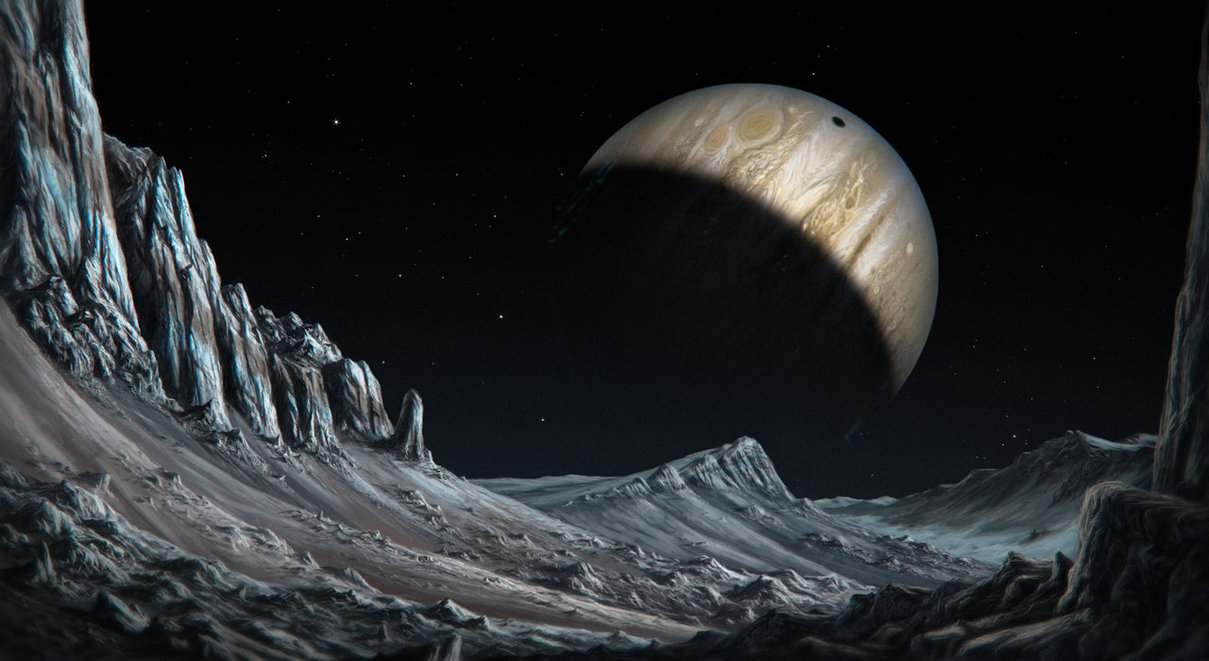


Earth’s highest point is Mount Everest, Nepal, which soars 8,850 kilometers (29,035 feet) in the Himalaya Mountains in Asia. Tectonic activity such as subduction and faulting has shaped the crust into a variety of landscapes. They crash against each other in a process called faulting. Plates slide above and below each other in a process called subduction. New crust is created along mid-ocean ridges and rift valleys, where plates pull apart from each other in a process called rifting.
Space art view from a planet surface series#
Exterior: Tectonic ActivityThe crust is covered by a series of constantly moving tectonic plates. Continental crust is about 35 to 70 kilometers (22 to 44 miles) thick. Oceanic crust extends about 5 to 10 kilometers (3 to 6 miles) beneath the ocean floor. There are two kinds of crust: thin, dense oceanic crust and thick, less-dense continental crust. Earth’s crust is the planet’s thinnest layer, accounting for just 1% of Earth’s mass. It is forced to the surface during volcanic eruptions and at mid-ocean ridges. The mantle’s molten rock is constantly in motion. Parts of the mantle are molten, meaning they are composed of partly melted rock. The mantle is about 2,900 kilometers (1,802 miles) thick, and makes up a whopping 84% of Earth’s total volume. A mantle of heavy rock (mostly silicates) surrounds the core. The core is found about 2,900 kilometers (1,802 miles) below Earth’s surface, and has a radius of about 3,485 kilometers (2,165 miles). It consists of a solid center surrounded by an outer layer of liquid. Earth’s core is mostly made of iron and nickel. No one has ever ventured below Earth’s crust. Most geologists recognize three major layers: the dense core, the bulky mantle, and the brittle crust. Planet Earth InteriorEarth’s interior is a complex structure of superheated rocks. Venus and Mercury do not have any moons, for example, while Jupiter and Saturn each have more than a dozen. Earth is the only planet in the solar system to have one moon. Earth has one natural satellite, the Moon. The geoid describes the model shape of Earth, and is used to calculate precise surface locations. In addition to bulging in the middle, Earth’s poles are slightly flattened. It has a slightly greater radius at the Equator, the imaginary line running horizontally around the middle of the planet. This means it is spherical in shape, but not perfectly round. In contrast, Jupiter, the largest planet in the solar system, has a diameter of 143,000 kilometers (88,850 miles), and its mass is about 1,898×1024 kilograms (2093×1021 tons). Its diameter is about 12,700 kilometers (7,900 miles), and its mass is about 5.97×1024 kilograms (6.58×1021 tons). Earth is the largest and most massive of the rocky inner planets, although it is dwarfed by the gas giants beyond the Asteroid Belt. The planet Jupiter is about 5.2 AU from the sun-about 778 million kilometers (483.5 million miles). This distance, called an astronomical unit (AU), is a standard unit of measurement in astronomy. It is about 150 million kilometers (about 93 million miles) from the sun. Earth is the third planet from the sun, after Mercury and Venus and before Mars. Earth is the planet we live on, one of eight planets in our solar system and the only known place in the universe to support life.


 0 kommentar(er)
0 kommentar(er)
